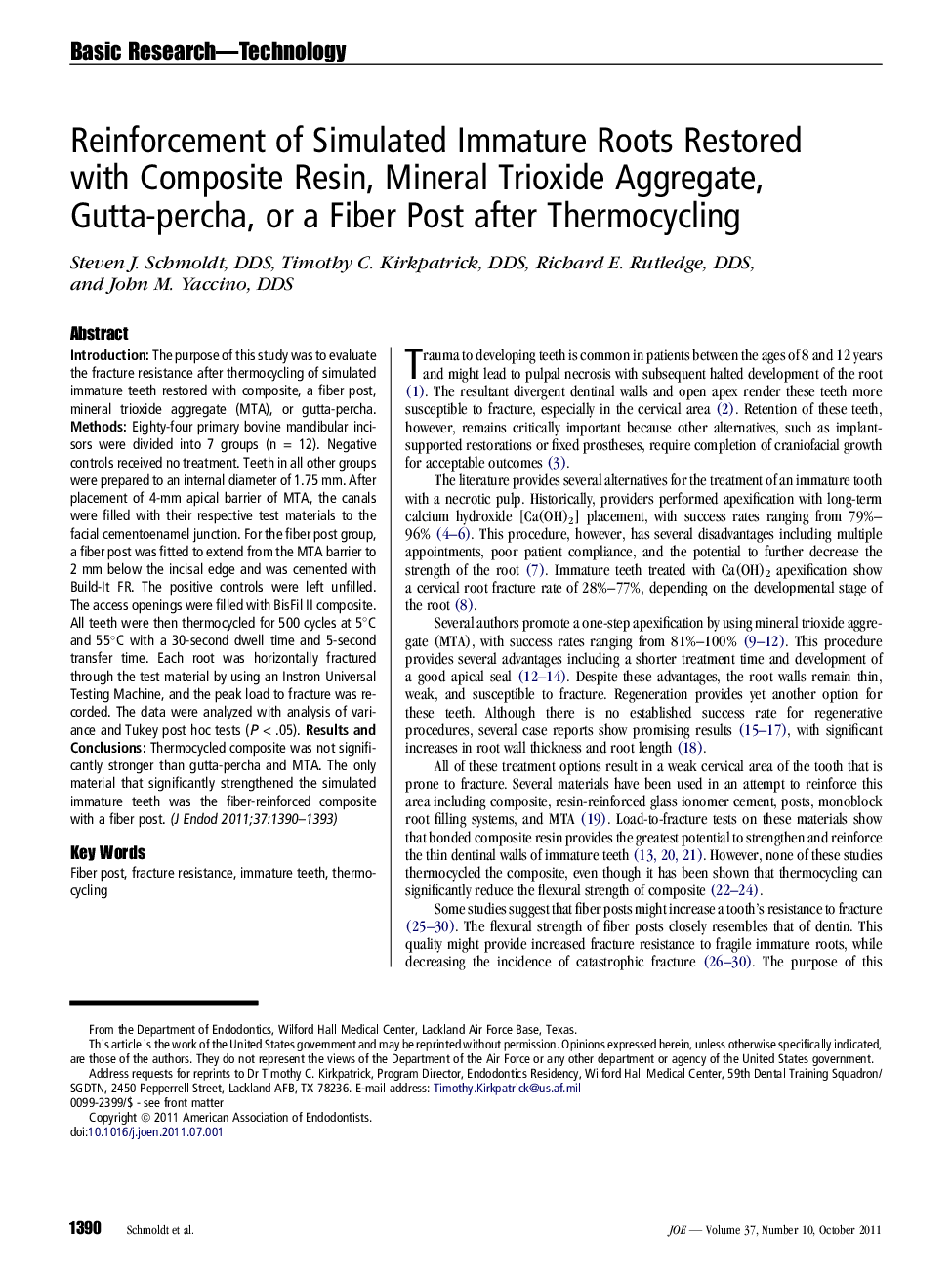| Article ID | Journal | Published Year | Pages | File Type |
|---|---|---|---|---|
| 3147671 | Journal of Endodontics | 2011 | 4 Pages |
IntroductionThe purpose of this study was to evaluate the fracture resistance after thermocycling of simulated immature teeth restored with composite, a fiber post, mineral trioxide aggregate (MTA), or gutta-percha.MethodsEighty-four primary bovine mandibular incisors were divided into 7 groups (n = 12). Negative controls received no treatment. Teeth in all other groups were prepared to an internal diameter of 1.75 mm. After placement of 4-mm apical barrier of MTA, the canals were filled with their respective test materials to the facial cementoenamel junction. For the fiber post group, a fiber post was fitted to extend from the MTA barrier to 2 mm below the incisal edge and was cemented with Build-It FR. The positive controls were left unfilled. The access openings were filled with BisFil II composite. All teeth were then thermocycled for 500 cycles at 5°C and 55°C with a 30-second dwell time and 5-second transfer time. Each root was horizontally fractured through the test material by using an Instron Universal Testing Machine, and the peak load to fracture was recorded. The data were analyzed with analysis of variance and Tukey post hoc tests (P < .05).Results and ConclusionsThermocycled composite was not significantly stronger than gutta-percha and MTA. The only material that significantly strengthened the simulated immature teeth was the fiber-reinforced composite with a fiber post.
